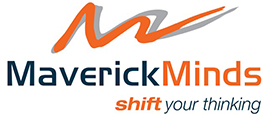Being human involves facing challenges that push us to think beyond the obvious. Whether we’re driving change, developing new ideas, guiding teams, working with the community, or navigating relationships, these actions often lead us to feelings of vulnerability and uncertainty, where the need for quick fixes can override the willingness to sit with the discomfort.
Humans are wired to move away from pain or towards pleasure, but what if you knew that the most powerful solution often isn’t found in the quick answers, but in sitting longer with the challenge? What if the answers and unique opportunities reside more in the questions we ask and how we ask them, rather than jumping to the first solution to ease our discomfort?
This is where Artful Inquiry comes into play. And I don’t just mean asking questions; I’m talking about creating an environment where curiosity and creativity are valued. Artful Inquiry requires opening the door to the unknown and experimenting and testing what might be possible. I’ve found that the best way to solve a problem is often by exploring it from an entirely different angle and taking a road less travelled.
What Makes Inquiry Artful?
Artful inquiry is not simply a checklist. It involves interweaving curiosity and vulnerability throughout discussions, creating an atmosphere where exploration and humility are both encouraged and acknowledged as valuable skills. This approach draws on the philosophies of art and creativity, requiring us to notice and notice again to broaden our perspective and critical thinking beyond the confines of linear and narrow thinking.
When we engage with art, whether by looking deeply and asking questions of it or actively engaging our senses through experiences like drawing, creating a song, crafting a story, viewing images, or immersing ourselves in a performance, we open ourselves to seeing and experiencing the world differently.
Artful inquiry as a methodology encourages us to apply this same mindset to our workplace practices. Taking this approach doesn’t mean seeking the quickest solutions to the problems; rather, you’ll discover new ways to tackle them by engaging your senses and shifting your mindset.
Why Does Artful Inquiry Matter?
It seems the world values speed over reflection. Artful Inquiry challenges that idea. It encourages us to slow down and explore more deeply, much like an archaeologist searching for hidden treasures. It shifts the focus from quick fixes to meaningful exploration, connection and communication. Instead of rushing to a conclusion, it encourages us to sit with the challenge and live in the question with a curious, open mind and heart.
Artful Inquiry opens up the possibility of discovering solutions that are more in tune with the actual challenge and can evolve as we continue to deepen our understanding of the situation and context we are working with.
When we integrate creativity into inquiry, we invite people to think more broadly, challenge assumptions, and engage with challenges in a way that is more expansive than addressing a problem head-on. Looking sideways at a problem can provide new insights.
Think back to a moment when you faced a challenge. How did you approach it? How could you have approached it in a more creative and artful way? By taking an artful approach, using our hands in a tactile way, walking, being in nature, mind mapping, drawing, improvising, or simply finding a new way of discussing it, we disrupt our habitual thinking to reveal new insights.
Your reflection question:
How Can You Bring Artful Inquiry into Your Leadership?
If you’re interested in incorporating artful inquiry into your practice, here’s a few ideas –
- Ask Open Questions: Move beyond yes/no queries and ask questions like, What would happen if we sat with our challenge longer? Who are we missing in this conversation?
- Use Creative Tools: Use paper and pen, work out loud, experiment with drawing, metaphors, and storytelling to help illuminate new possibilities. A visual or creative prompt can reveal ideas that aren’t obvious at first glance. Look again…
- Notice what’s Unspoken: Possibilities and answers are often hidden between the lines. Think about an artwork or a piece of music. The space between what we see, hear, and don’t see and hear, tells the whole story. What’s not being said? What emotions or assumptions underpin and shape the conversation that are not obvious? Listening carefully to these subtle cues can unlock deeper insights and help better understand the situation’s complexity.
- Pause and Reflect: Like an artist stepping back from their canvas, give yourself and your team space to observe and appraise the context and elements in play. Sometimes, the best breakthroughs come from moments of quiet and stillness.
The Ripple Effect
When Artful Inquiry is at the heart of our collaborations, we create a space for more thoughtful and intentional conversations rather than rushing headlong into solution mode. It opens the door for experimentation and innovation.
Through my facilitation and coaching work with organisations, I’ve seen firsthand how this approach leads to transformative moments. Artful inquiry doesn’t just change how we think, the ripple effect changes how we relate to each other, how we engage in the challenges we face and the solutions discovered along the way.
If you’d like to learn more about Artful Inquiry, please schedule a time to chat with me and begin by downloading my guide, “5 Essential Steps to Catalyse Change,“ which will provide you with helpful questions to consider before we chat.


